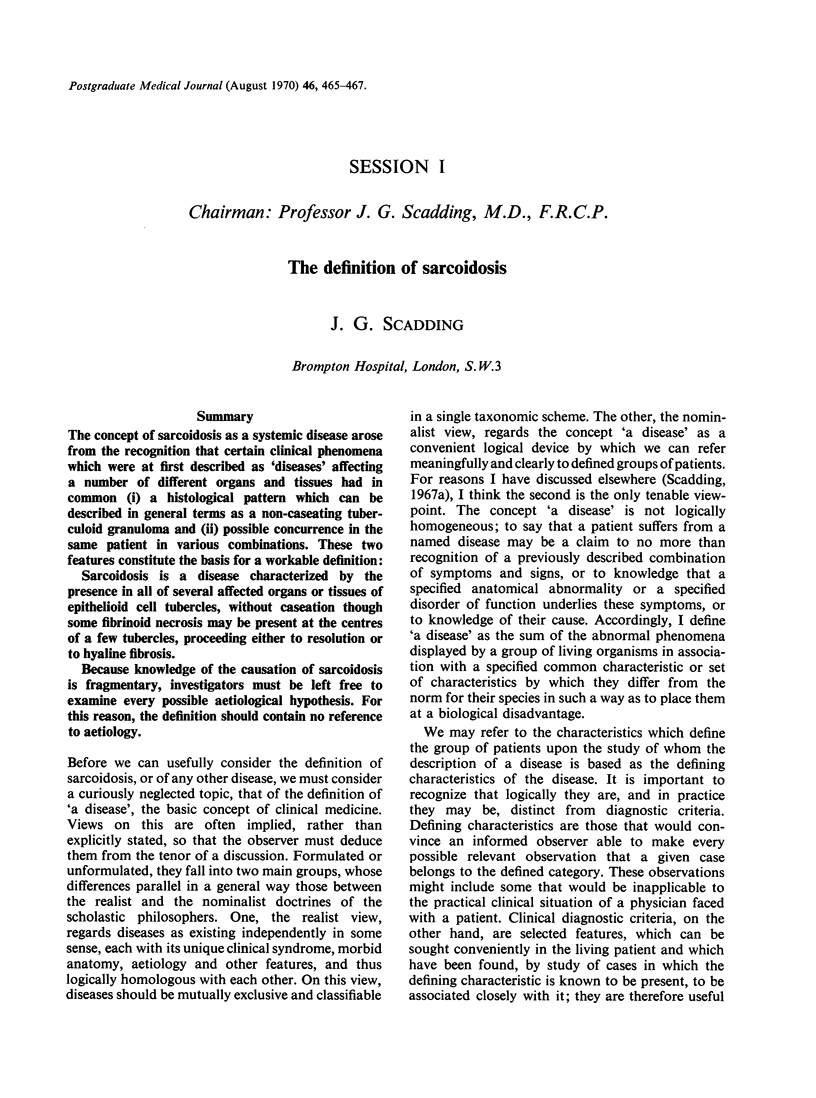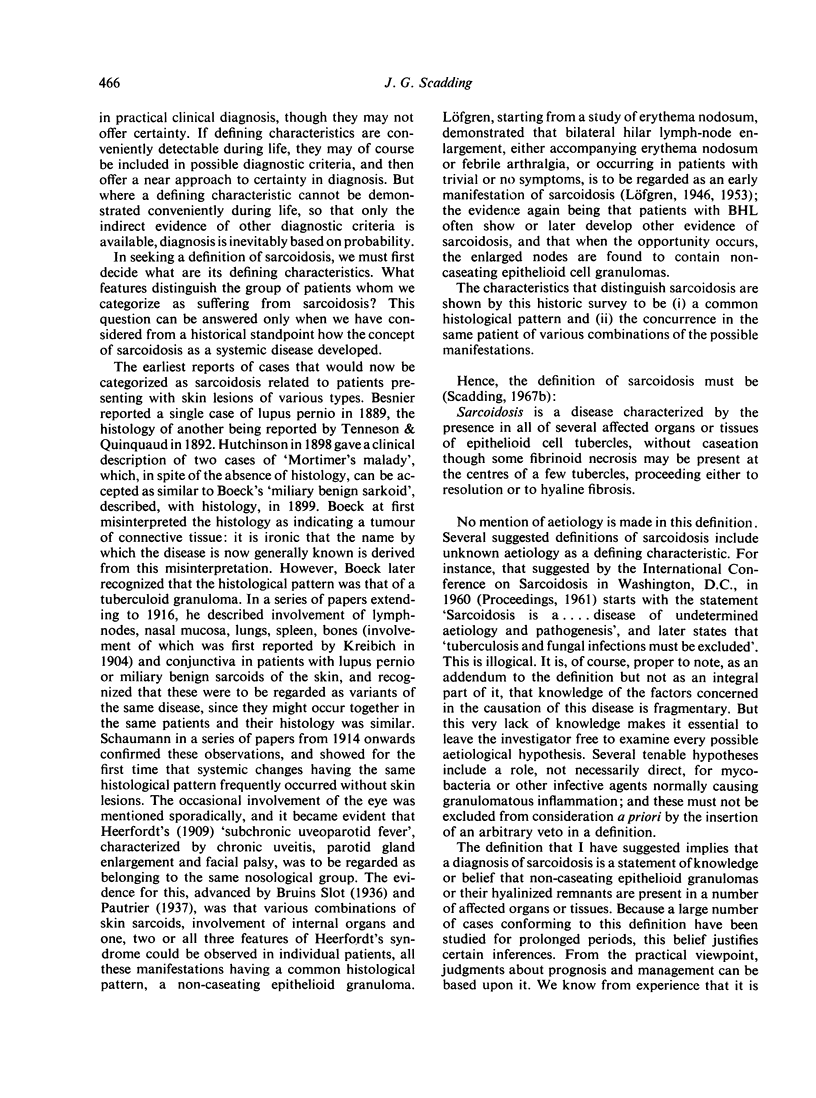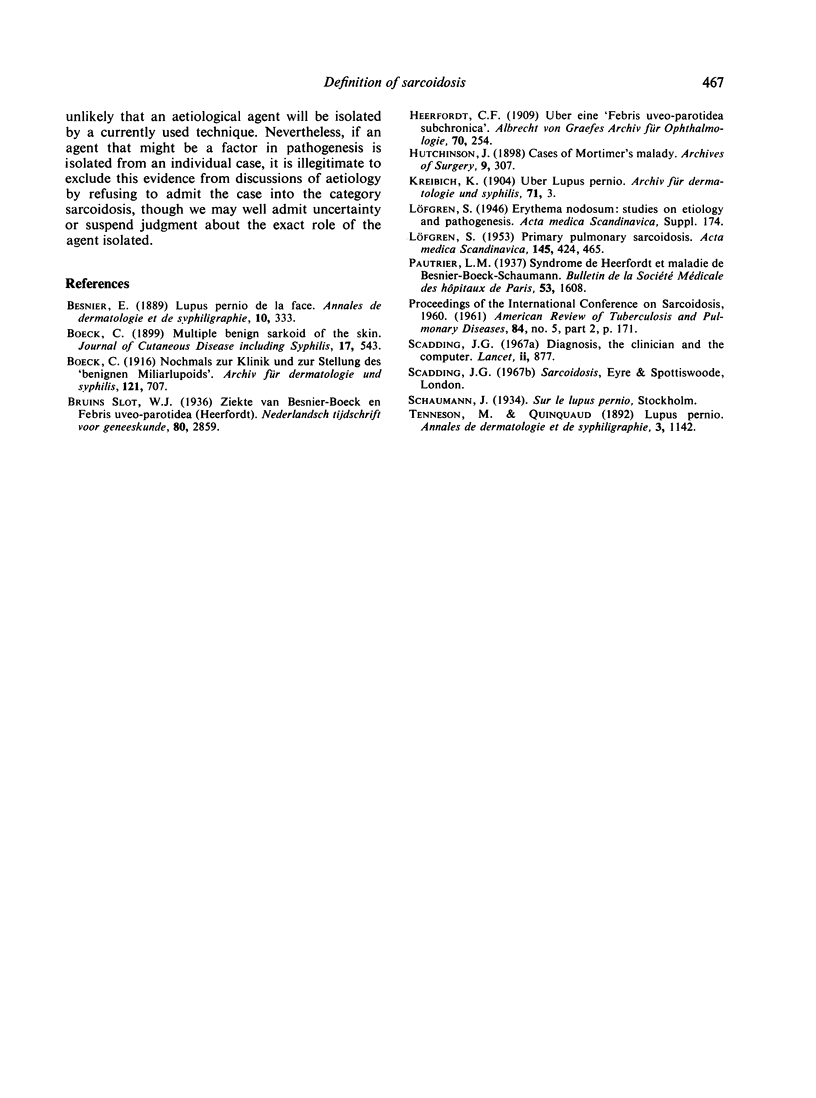Abstract
The concept of sarcoidosis as a systemic disease arose from the recognition that certain clinical phenomena which were at first described as ‘diseases’ affecting a number of different organs and tissues had in common (i) a histological pattern which can be described in general terms as a non-caseating tuberculoid granuloma and (ii) possible concurrence in the same patient in various combinations. These two features constitute the basis for a workable definition:
Sarcoidosis is a disease characterized by the presence in all of several affected organs or tissues of epithelioid cell tubercles, without caseation though some fibrinoid necrosis may be present at the centres of a few tubercles, proceeding either to resolution or to hyaline fibrosis.
Because knowledge of the causation of sarcoidosis is fragmentary, investigators must be left free to examine every possible aetiological hypothesis. For this reason, the definition should contain no reference to aetiology.
Full text
PDF


Selected References
These references are in PubMed. This may not be the complete list of references from this article.
- LOFGREN S. Primary pulmonary sarcoidosis. I. Early signs and symptoms. Acta Med Scand. 1953;145(6):424–431. [PubMed] [Google Scholar]
- Scadding J. G. Diagnosis: the clinician and the computer. Lancet. 1967 Oct 21;2(7521):877–882. doi: 10.1016/s0140-6736(67)92608-6. [DOI] [PubMed] [Google Scholar]


